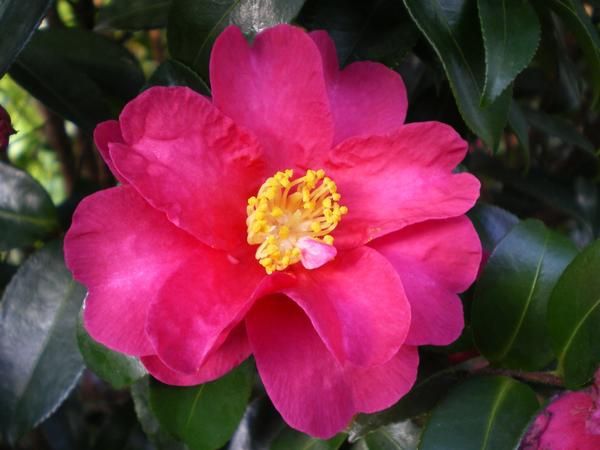Camellia sasanqua

Description: Evergreen shrubs that flower earlier than the better known Camellia japonica. Delicate, tea scented blooms are produced from late autumn through to early spring in a range of colours, from red through to pink and white. The flowers provide a dazzling splash of colour on a gloomy winter day.
Great for woodland gardens in dappled shade or in containers. Can be trained against a sunny wall, shelter from cold winds.
Climate / Position: Partial shade, although sasanqua types can tolerate both full sun and partial shade but still try to avoid morning sun on new buds.
Height / Spread: Height 5m. Spread 3m.
Soil Requirements: Acid to neutral soil. Well drained and humus rich.
Pruning : Little or no pruning required. Cut out weak stems and prune after flowering if required.
Special Requirements: Camellia sasanqua are shallow rooted , so do not plant too deep. Ensure that the top of the pot is at soil level. Do not allow roots to dry out therefore it is recommended to keep plants well mulched with leaf mould or bark.
Sometimes referred to as Christmas Camellias, the 'sasanqua' varieties of Camellia are native to the evergreen, coastal forests of southern Japan. It was introduced by Dutch traders into Europe in 1869. . The Japanese use the leaves of 'sasanqua' to make tea, and the seeds are pressed into tea seed oil for use as a lubricant and in cooking and cosmetics.
'Sazanka” is a Japanese name of the ornamental shrub Camellia sasanqua and two related hybrid camellia species – C. x hiemalis and C. x vernalis. Non-Japanese people call it “sasanqua”. In Japanese, word “sazanka” is written with three Kanji characters meaning “mountain”, “tea” and “flower”. In Chinese, sasanqua is called “cha-mai” and is written with two characters meaning “tea” and “pretty”, together meaning “pretty tea”.
